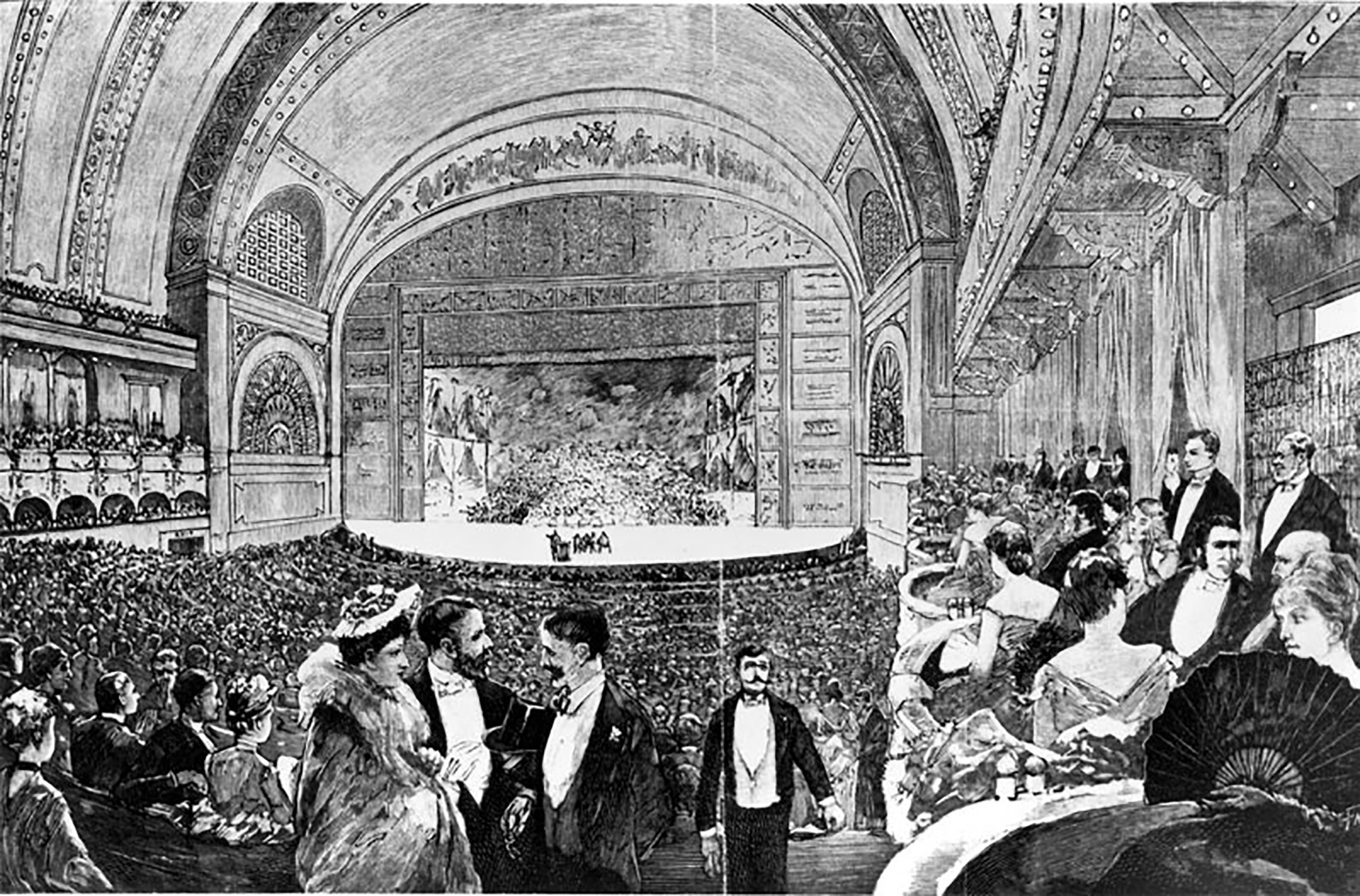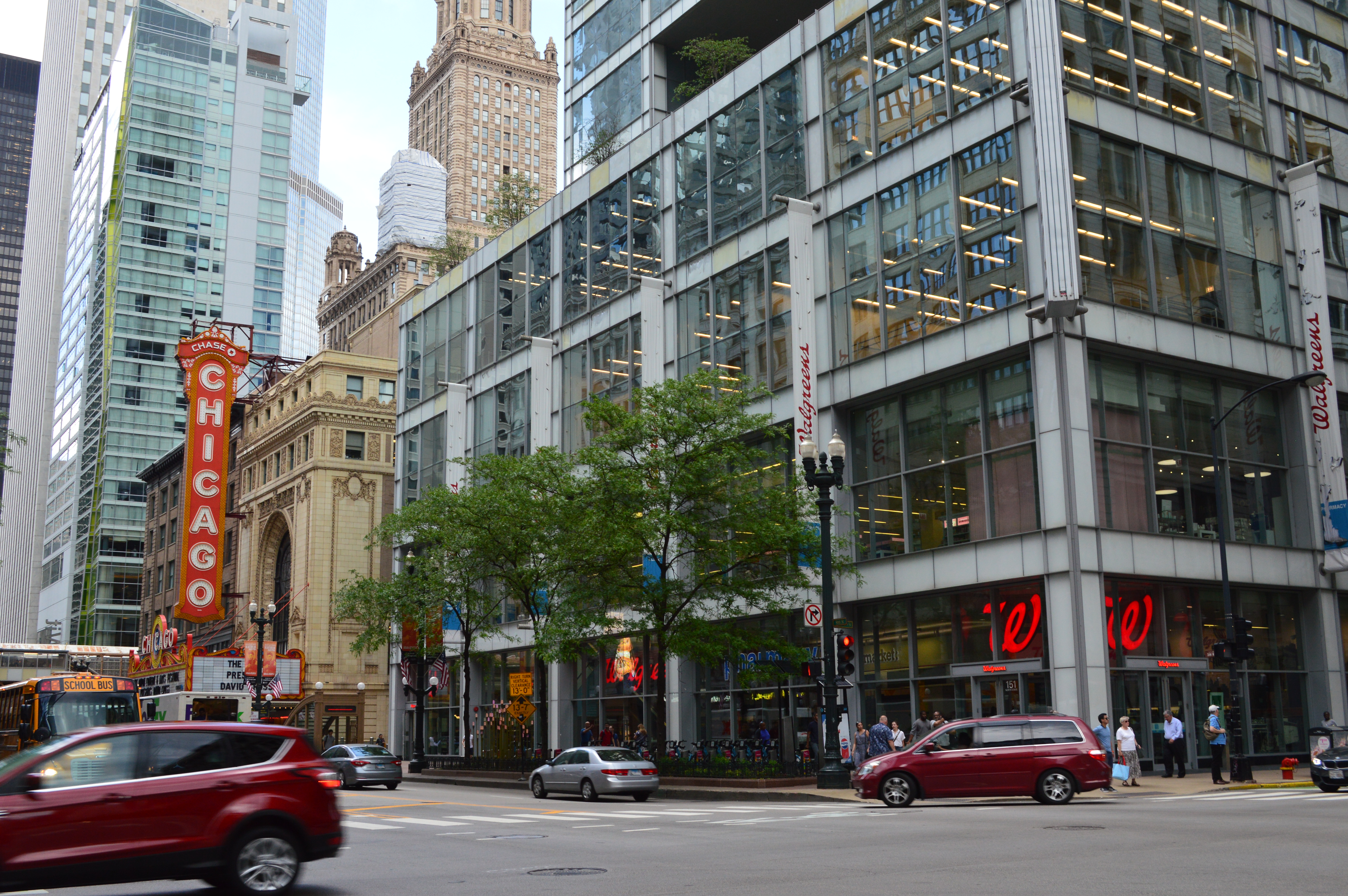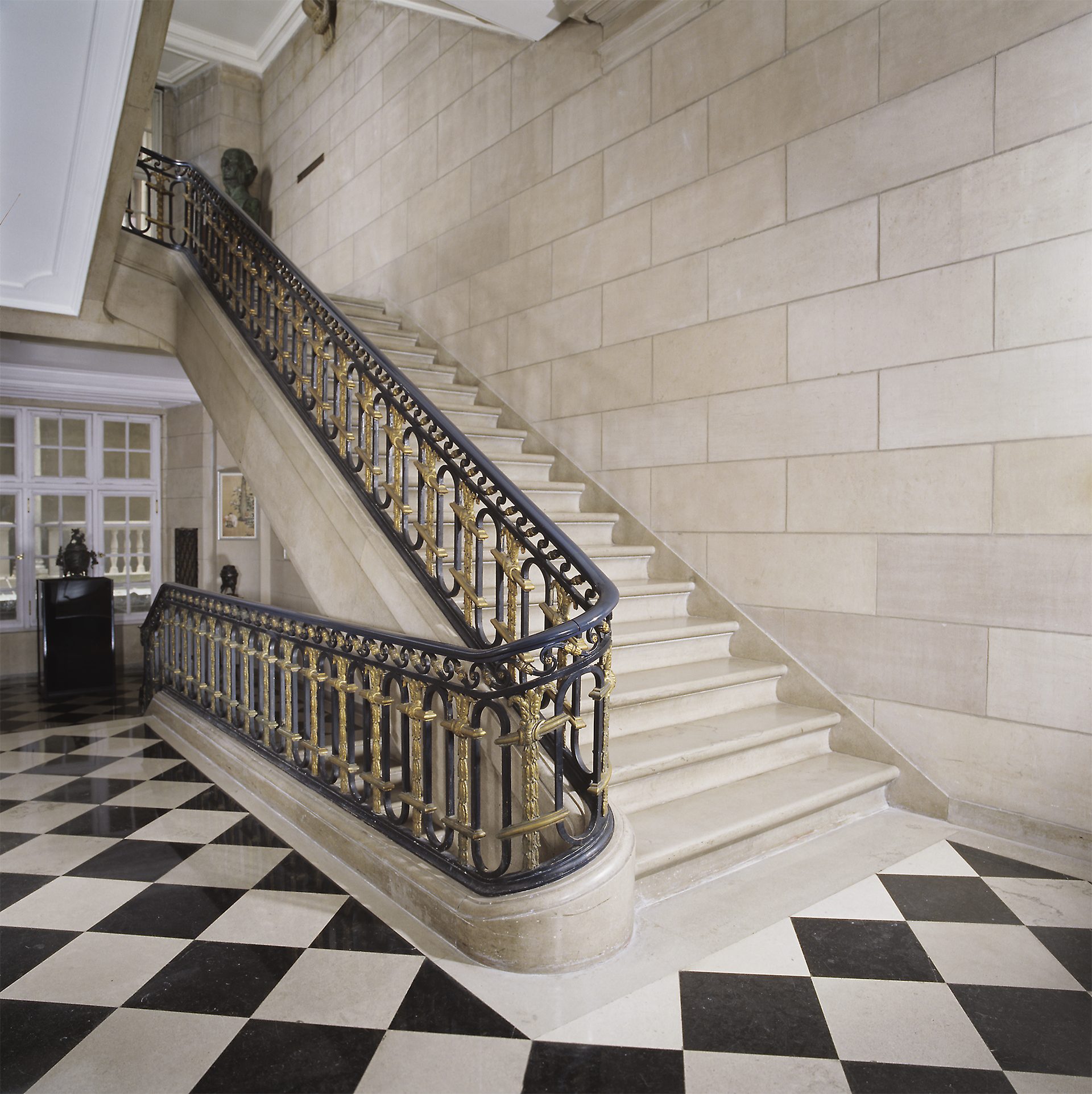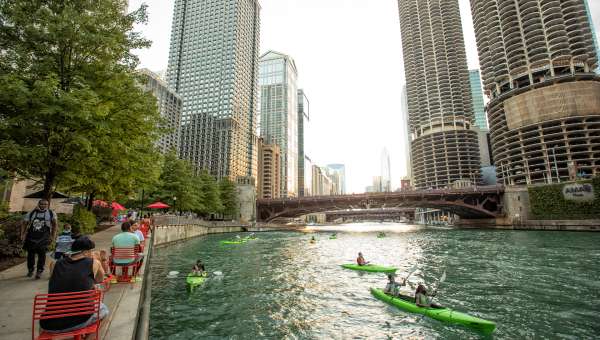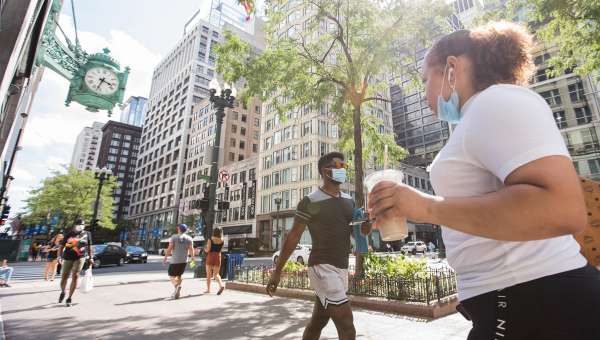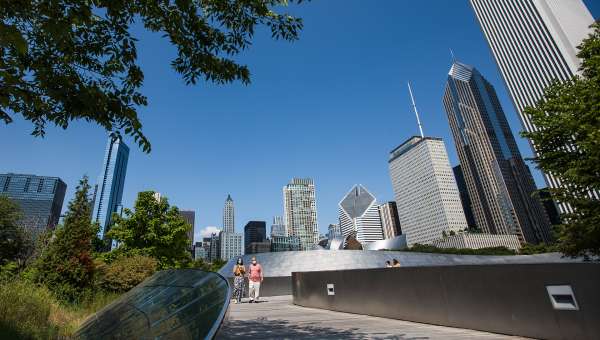4 MIN READ – In a neighborhood like the Loop, every building has a story. In addition to the rich history of State Street, “that great street,” read on to learn about the significance of some of your favorite businesses and institutions. You might be surprised how many historic spots you didn’t know you’ve been walking past in “Everyone’s Neighborhood.”
DePaul University
On State Street, a retail legacy became a higher education reality. In the early 20th century, the owners of the Rothschild Department Store on State Street between Van Buren and Jackson wanted to build a larger, more modern store to capture State Street shopping dollars. Designed by Holabird and Roche, the new store, which was one of largest and most modern in the world, opened in 1912.
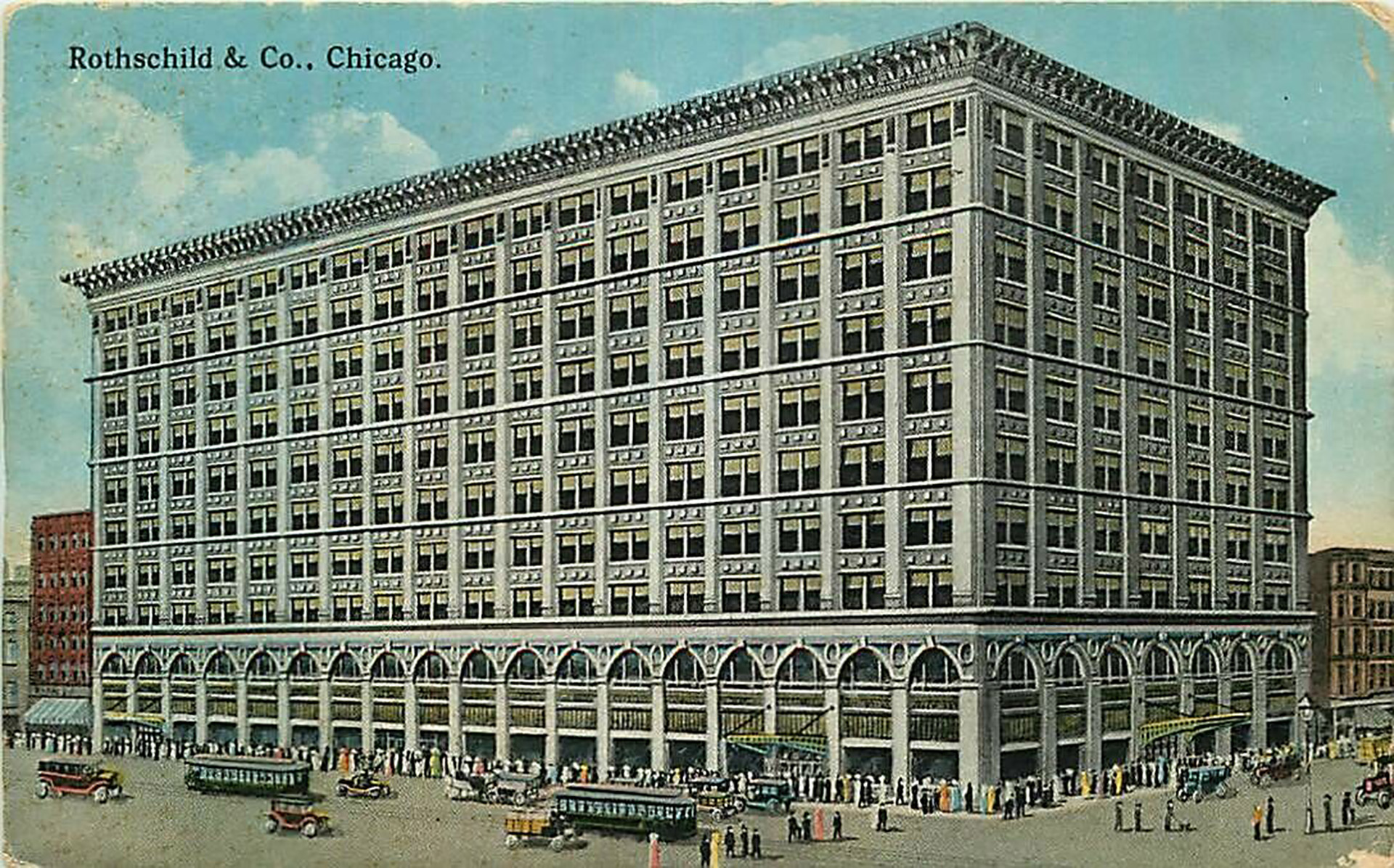
In 1924, the store became the Davis Store, which was the bargain brand for Marshall Field’s. In 1936, the Goldblatt’s Brothers chain made the store their State Street headquarters. Urban retail decline led to the end of the building’s department store history in 1981.
Briefly considered as a home for the new Chicago Public Library, the building instead underwent an award-winning renovation and in 1993 emerged as one of DePaul University’s anchor buildings in the Loop. The edifice was given landmark status in 1989.
Art Institute of Chicago
Since its founding in 1879, the Art Institute has grown its collection and its physical site, always serving as a repository of world-class art as well as an “institute”—open to inquiry, research, scholarship, experimentation, and the exchange of ideas. It was founded as both a museum and school for the fine arts in 1879, a critical era in the history of Chicago as civic energies were devoted to rebuilding the metropolis that had been destroyed by the Great Fire of 1871. The Art Institute found its permanent home in 1893, when it moved into a building constructed on what is recognized today as the traditional homelands of the Council of Three Fires—the Ojibwe, Odawa, and Potawatomi peoples. Built jointly with the city of Chicago for the World’s Columbian Exposition at the intersection of Michigan Avenue and Adams Street, that building—its entry flanked by the two famous bronze lions—remains the “front door” of the museum even today. Learn more.
Auditorium Theatre
The National Historic Landmark Auditorium Theatre opened on December 9, 1889, built by famed architects Louis Sullivan and Dankmar Adler. The theater was immediately hailed as one of the most beautiful venues in the world, and today it remains one of the most important performance spaces in the world, hosting hundreds of events each year. In its 131-year history, the Auditorium has hosted thousands of companies and artists: from the Chicago Symphony Orchestra to Booker T. Washington; from Prince to the NFL Draft; from American Ballet Theatre to Jimi Hendrix; from Alvin Ailey American Dance Theater to Justice Ruth Bader Ginsburg; from David Byrne to Ballet Folklórico de México… The list goes on.
The theatre re-started in-person Historic Theatre Tours this fall with COVID-19 safety measures in place. Learn more.
Walgreens
Walgreens Flagship location at State and Randolph is built on the site of one of the original Walgreens, which operated from 1926 to 2005. Just as they did here in the 1920s, the store is open for business and here to help the community with health and wellness. They are currently taking walk-up flu shot appointments at all Loop Walgreens locations. Stop by the Flagship or any of our Loop locations to help protect yourself and your family from the flu.
International Museum of Surgical Science
The International Museum of Surgical Science is housed in a gorgeous Gilded Age mansion that overlooks Lake Michigan. The home was once owned by a wealthy Chicago socialite named Eleanor Robinson Countiss Whiting, whose father had it built for her as a wedding present. Designed by renowned architect Howard Van Doren Shaw, the building is based closely on Le Petit Trianon, one of Marie Antoinette’s chateaux at Versailles. After deciding to add an extra story to her mansion, Eleanor reportedly said, “It was necessary. If Marie Antoinette had lived in Chicago, she would have raised it, too.” Eleanor was a consummate hostess and regularly threw parties for Chicago families whose names we still know today, including the Fields, the McCormicks, and the Wrigleys. Visit the International Museum of Surgical Science for stunning views, exquisite architecture, and Gold Coast splendor.


